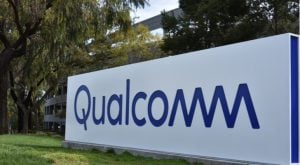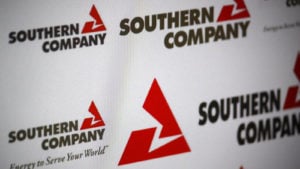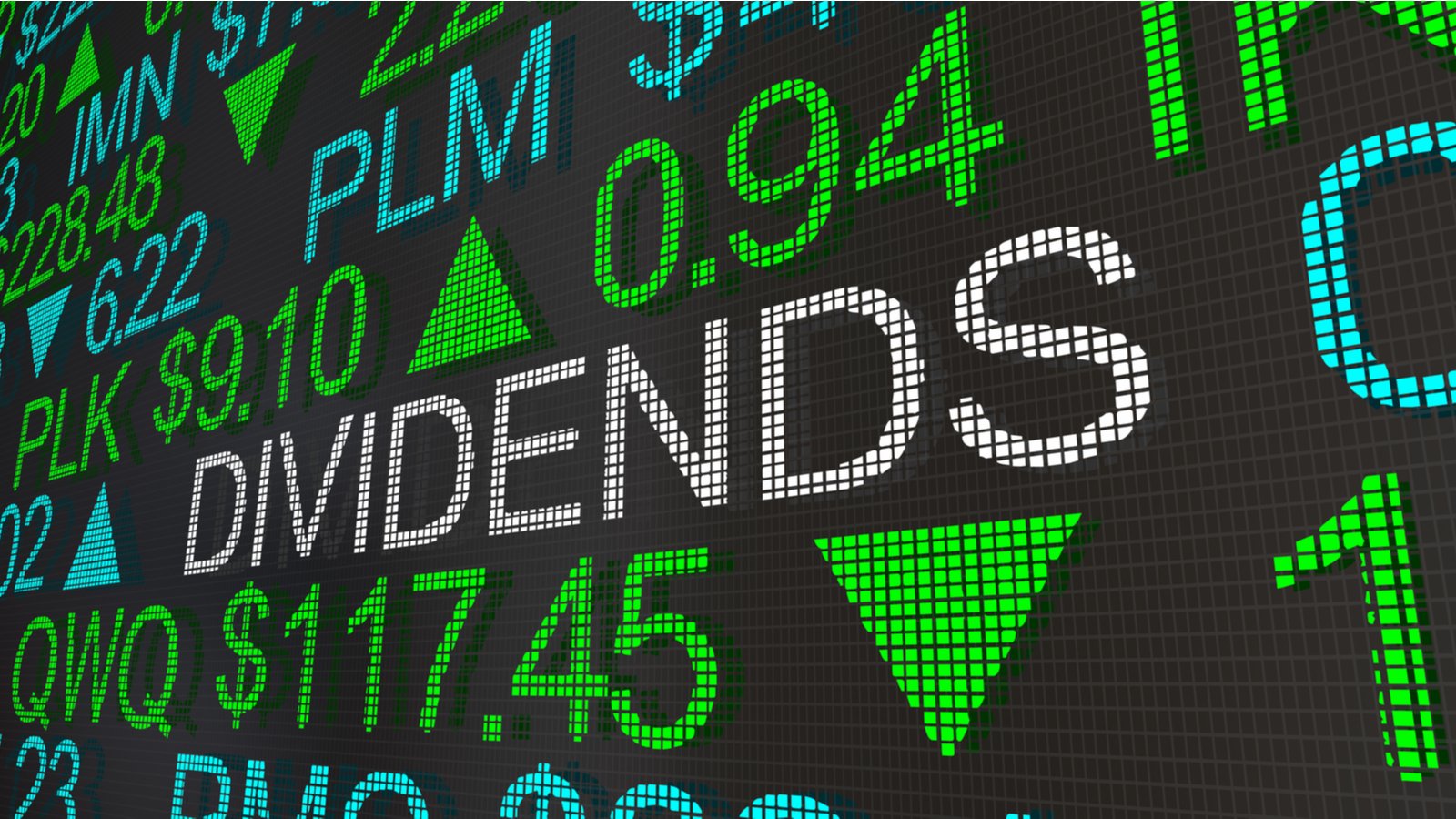There are many paths investors can take to profit on Wall Street but one of the best strategies is buying dividend stocks. History shows that income stocks outperform all other stocks. Going as far back as 1930, there has never been a losing decade for dividend stocks on the S&P 500.
Dividend Aristocrats are the cream of income-generating stocks. These are companies that not only pay a dividend but have raised their payouts for 25 years or more. Moreover, to qualify for the list, they also have to be a component of the S&P 500 index. Only 67 stocks out of the thousands that trade on the market have made the cut.
Yet the list is always changing. Some companies cross that 25-year threshold and received the crown. Others fall by the wayside because they can’t maintain their payments. Walgreens Boots Alliance (NASDAQ:WBA) was kicked out earlier this year after it slashed its payout to save money.
Below are seven of the best stocks close to becoming Dividend Aristocrats. Consider buying them for your own portfolio.
Lockheed Martin (LMT)

Source: Giannis Papanikos / Shutterstock.com
Lockheed Martin (NYSE:LMT) is the largest defense contractor with virtually all of its $67.6 billion in annual revenue derived from government contracts.
The military and aerospace leader is involved in all the major military programs. It builds F-16 and F22 fighter jets, F-35 stealth fighters, the Patriot missile systems, Javelin anti-tank weapons systems, Black Hawk helicopters, Trident ballistic missiles, and NASA’s Orion spacecraft. Many of these weapons and defense systems are also sold to foreign governments.
Not surprisingly, constructing the global war machine is extremely profitable. LMT stock’s net earnings last year totalled $6.9 billion, or $27.55 per share, up 21% from last year.
The defense giant pays a dividend that totals $12.60 per share annually and yields a healthy 2.8%. As Lockheed generates generous amounts of free cash flow, some $6.2 billion in 2023, the dividend is well covered. And with a free cash flow (FCF) payout ratio of 49%, there is plenty of room for future growth. Last October, Lockheed raised the dividend for the 21st consecutive year. It only needs to do that four more times to reach Aristocrat status, which seems easily within the defense behemoth’s reach.
Clorox (CLX)

Source: TY Lim / Shutterstock.com
Everyone knows Clorox (NYSE:CLX) for its namesake bleach but the consumer products leader has a portfolio of other brands including Pine-Sol cleaners, Kingsford charcoal and Glad storage bags. Clorox products tend to be the leading brands in their respective markets and generate 80% of its $7.4 billion in annual net sales from brands holding the No. 1 or No. 2 market share position.
After a rough couple of years following the pandemic boom, Clorox then suffered a major cyberattack last August that disrupted supply chains, interfered with production and caused product shortages. Now CLX stock is on the mend.
Shares are up 6% in 2024 and it is enjoying 20% non-GAAP organic sales growth for the first half of its current fiscal year. The consumer products company is rebuilding inventories ahead of schedule, driving top line growth and rebuilding margins. Gross margins jumped 730 basis points in the fiscal second quarter, hitting 43.5%.
There is still work to do but Clorox’s dividend remains secure. The bleach maker has increased the payout for 21 straight years and with a free cash flow payout ratio of 62%, there is sufficient cushion for additional growth and expansion.
Qualcomm (QCOM)

Source: Shutterstock
Chipmaker Qualcomm (NASDAQ:QCOM) is the third stock on the brink of becoming a Dividend Aristocrat. The smartphone chip supplier for both Android and iOS devices also has a 21-year record of raising its dividend, which yields 1.9% annually.
We’ve been focusing on the free cash flow payout ratio with these candidates because companies can only do so much with the money they have left over after paying their bills. Rewarding shareholders with dividends is one of them. For Qualcomm, it uses just 35% of its FCF meaning there is little danger of the dividend being cut.
That’s because the chipmaker’s business is booming. Perhaps not so much as rival Nvidia (NASDAQ:NVDA), but fiscal first quarter results showed revenue jumped to $9.9 billion primarily due to 16% growth in its handset chip business. Even as the Apple (NASDAQ:AAPL) iPhone 15 ramp settles down, Samsung’s Galaxy S24 smartphone should provide the next leg of its road higher. The chipmaker is also benefiting from a recovery of demand in China.
Sure, QCOM stock is no Nvidia but it doesn’t have to be and it remains a solid semiconductor stock to buy.
Nike (NKE)

Source: mimohe / Shutterstock.com
Footwear maker Nike (NYSE:NKE) has been a laggard in 2024 with its stock down a harsh 15%. It is one of the worst-performing S&P 500 stocks due to stiff competition from competing shoemakers, like Deckers Outdoor (NASDAQ:DECK) Hoka brand and Adidas (OTCMKTS:ADDYY). Business in China is also slow.
Yet things may be changing up for the sports apparel company. Although it is still sorting through focusing on direct-to-consumer outlets versus the wholesale market, China is rebounding. Fiscal third-quarter earnings showed currency-adjusted sales up 6% there with revenue across the nine months of its fiscal year running 8% higher.
NKE stock is down 28% from its recent high but now trades at some of its lowest levels in years. On a price-to-sales basis, the stock is about where it was a decade ago, and it’s no different with its price-to-earnings ratio.
Some might say the discount is appropriate because of its slowed momentum but it continues to produce substantial cash flows. While Nike has raised its dividend for 22 years running, over the past five years it has been increasing it at a 10% compounded annual growth rate (CAGR). FCF has expanded at a similar CAGR and with a 41% FCF payout ratio, NKE stock’s dividend has more room to move.
Southern (SO)

Source: 360b / Shutterstock.com
Electric power utility Southern (NYSE:SO) should be a surprise member of the soon-to-be Dividend Aristocrat list. Utilities are cherished for their stable growth and dividend payments, which is why they were often considered widows-and-orphans stocks.
Southern is a gas and electric utility generating power for across much of the south, appropriately enough. It also operates nuclear power facilities and put Plant Vogtle Unit 3 into operation last July. The plant is the first new construction facility in the U.S. in over 30 years. It anticipates putting Unit 4 into service some time in the second quarter.
Over the past decade, SO stock delivered 135% total return for investors. While that is below the average of the S&P 500, you don’t buy into utilities for their growth momentum but the surety of its dividend payments. Southern’s dividend yields 3.9% annually and the company has grown the payout for 22 consecutive years.
Nuclear power is back into vogue. An all-of-the-above solution is needed as energy demands exceed the capacity of renewables. Expect SO stock and its dividend to keep growing.
Microsoft (MSFT)

Source: The Art of Pics / Shutterstock.com
At this mature stage of its lifecycle, it remains surprising to see Microsoft (NASDAQ:MSFT) reinvent itself once again. As InvestorPlace’s Louis Navellier recently noted, the tech giant may be the ultimate artificial intelligence (AI) growth play for the next decade.” Having integrated AI into the very fabric of its operations, MSFT stock is now joined at the hip with this technological leap forward.
Microsoft invested billions of dollars in OpenAI and put its ChatGPT generative AI to work in Bing search, the Office suite of products and its fast-growing Azure cloud services business. It has given the tech leader a new lease on life and accelerated its potential. Microsoft is now the world’s most valuable company with a $3.1 trillion valuation.
This potential could equally apply to the dividend, which Microsoft has increased every year after initiating the payout in 2003. The company generates massive FCF, so $63 billion worth last year. It’s grown FCF 9% annually for the past decade, an amazing achievement considering this company’s size. That puts its FCF payout ratio at just 33%, which ensures investors will enjoy future increases for years to come.
Eversource Energy (ES)

Source: Shutterstock
The last stock to consider buying before it becomes a Dividend Aristocrat is another utility, this one serving the New England states of Connecticut, Massachusetts and New Hampshire. Eversource Energy (NYSE:ES) is on the doorstep of aristocracy after raising the payout in February by almost 6% to 71.5 cents per share. That gives it a 24-year history of increasing its dividend. This time next year could see it rubbing elbows with its royal neighbors. Investors might see their holdings significantly higher too.
After a steady climb higher, ES stock stagnated during the pandemic and has since been in decline. It’s down 40% from its March 2020 high. The stock is down 24% in the last year alone. The regulated utility is reeling from exiting several offshore wind projects last year and took a $1.6 billion charge in the fourth quarter. It is also in the process of selling its 50% interest in the Sunrise Wind project in New York.
Eversource had been one of the first utilities to pursue wind energy projects but decided to completely abandon them two years ago. It should be fully free of the clean energy option when the Sunrise Wind project goes through. Now it will focus completely on its utility operations and can finance their transmission and distribution growth projects that will better earn a steady regulated return. The stock is already up 13% from its 52-week lows.
With a narrow focus on core operations, analysts are upbeat it can continue growing its dividend and rewarding shareholders.
On the date of publication, Rich Duprey held a LONG position in CLX and WBA stock. The opinions expressed in this article are those of the writer, subject to the InvestorPlace.com Publishing Guidelines.

